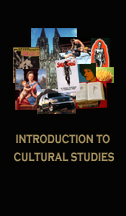field work exemplar
What does a successful
Field Work Paper look like? Read a student example from our course:
Field Work: The Rainforest Café (c) Shanley Erin
Kane 2006 (All Rights Reserved. This may not be duplicated
in any form.)
The dictionary of culinary consumer culture in the United States
suggests a fairly wide range of definition where the various ambiances,
rituals, and social codings corresponding to the term “café”
are concerned. In our cultural lingo, the term “café”
has a wide variety of identity options available within it, ranging
from the quaint coffee shop, to the casual dining space, to the
al fresco pavilion featuring bread baskets and scrolling menus.
“Café” has a distinctly European association,
the aura of high culture and leisure activity; yet it can also stand
for a greasy breakfast diner with fast turnover and a line of short
order cooks. Despite this multiplicity of readings, the term “café”
still suggests a fairly strict distinction between it and other
enterprise; namely, that its primary territory is that of the gastronomic
art, with other inclinations (casual conversation and people-watching
included), revolving around this singular essential purpose, and
inseparable from it. In this way is the term “café”
in the context of “The Rainforest Café” a purely
misleading term.
The Rainforest Café bills itself as a restaurant in name
alone. In fact, The Rainforest Café is whole-heartedly dedicated
to the task of creating itself as more than just a simple place
to sit down and have some “Lava Nachos” or a “Paradise
Pot-roast”. The façade is the first step the Rainforest
Café takes in constructing its identity as no mere restaurant,
but rather a locale in which to experience a genuine encounter with
nature. Despite considerable evidence to the contrary (its terrifically
urban setting and capitalistic intent, its cartoons and stylized
depictions of animals), this institution sets itself up as a true
safari, an actual contact point with the natural world.
This effect is initially achieved by the considerable lengths the
restaurant goes to in creating a metal and physical separation between
the urban world and itself. The building is decked out entirely
in murals and three dimensional renderings of jungle and animal:
a gigantic frog perches over the signboard; huge mushrooms protruding
from the plant motif of the walls imitate the shade of trees; gorillas
peer out from entanglements of vine. Enclaves of living exotic-looking
plants are sprayed with a cooling mist as the building casts a dusky
shade over its entrance, marked with benches, a bulletin board featuring
its menu, and, curiously enough, a wooden sign proclaiming “Your
Adventure Begins Here.” This business sets itself apart from
the surrounding McDonald’s and skyscrapers with elaborate
decoration, by creating a sense of oasis. This is its first step
in creating and presenting itself as actual nature, a world outside
coarse, artificial city living.
The construction of “café as nature” elaborates
indoors, and is erected both through the transformation of the consumer
identity into that of a tropical adventurer and through the continued
representation of the natural world. These aspects are achieved
simultaneously through the organization of the business. In the
gift shop, columns parading as trees hold up a dense thicket of
vines and stuffed animals to peer up at. Walking through the racks
of merchandise, one feels one is walking through a forest. The roars
of leopards and the hoots of monkeys play from speakers in the ceiling,
making it seem as if the animals are all about you. A gigantic waterfall
in the entrance makes soothing crashing noises against its plastic
rocks. Consumers approach the hostess stand through a frayed rope
divider meant to look like a vine, where they are greeted by an
employee dressed up in an outfit that resembles the khaki uniforms
of lion hunters on TV. To be seated, consumers follow their “guide”
through a huge archway composed entirely of salt-water fish tanks-
perhaps containing the only true “nature” to be found.
This archway contributes to the sense that one is passing into another
world, another place. Through these and other devices, The Rainforest
Café becomes more than a restaurant. It becomes an actual
natural environment, and its patrons genuine forest adventurers.
This construction is cemented with a quick look through the gift
shop. Photo booths proclaim “Create a Unique Souvenir: Put
Yourself in the Picture.” A rack of The Rainforest Café’s
own brand of jewelry proclaims “Souvenir Pins”. There
are lunchboxes and straws, pajama pants, stuffed animals- but there
are no binoculars or educational books on the jungle ecosystem;
no bug containers or magnifying glasses; no watershoes or trail
mixes. In short, nothing is sold that would assist in or encourage
a consumer’s interaction with nature, the real nature outside
of the store. Through a combination of presenting The Rainforest
Café as an expedition to commemorate with a souvenir token
and excluding merchandise that would help explore the environment,
The Rainforest Café presents itself not as an access point
to nature, but as nature itself.
To an adult, these assertions may seem ridiculous. After all, The
Rainforest Café is clearly not a genuine ecosystem. But the
key to The Rainforest Café is that its success depends on
children. Its gift shop is dominated by children’s apparel
and trinkets- they occupy the foremost area of the store. Cartoon
characters abound. Children are seated at every table. This is not
a place for adults. This is a place for adults to take children.
Childhood- a period marked with an inability to accurately distinguish
fantasy from reality. It is worth asking: even though a parent knows
The Rainforest Café is not nature, does their kid?
(c) Shanley Erin Kane 2006

